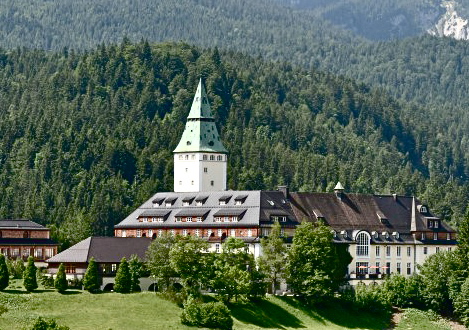“Your phone’s buzzing.”
“It’s always buzzing.”
“How about answering it…?”
“Yes, yes,” Blomqvist muttered.
“Who’s that?” he asked, gruffly.
“Salander,” said the voice, and at that he gave a big smile.
“Lisbeth, is that you?”
“Shut up and listen,” she said. And so he did.
 Eighty million copies of the three novels in Stieg Larsson’s posthumous Millenium series have been sold since they were released in Sweden and then translated into almost every language in the world. Most readers who began this series – The Girl with the Dragon Tattoo (2005), The Girl Who Played with Fire (2006), and The Girl Who Kicked the Hornet’s Nest (2007) – became instant fans of its main characters, Lisbeth Salander and Mikael Blomqvist, and went on to read all of the books. Many also attended the three superb Swedish films made of these novels. Chosen by the heirs of Stieg Larsson’s estate to be the author of the first new Millenium novel in almost a decade, David Lagercrantz is a Swedish journalist like Larsson and his main character Blomqvist, but Lagercrantz is also a successful novelist, and it may be for these story-telling skills that he was selected to write the sequel to The Girl Who Kicked the Hornet’s Nest, Larsson’s last novel. For Lagercrantz, the task of succeeding as the author of a new Millenium novel must have been intimidating, if not terrifying, with everyone who has ever read these novels looking for mistakes, changes, and signs that the main characters, Salander, a damaged and reclusive computer hacker, and Mikael Blomqvist, an investigative reporter and founder of Millenium magazine, might not be so intriguing in this novel, or that the plots might not be as full of suspense and wild excitement, or that Lagercrantz might not be up to the task as Larsson’s successor.
Eighty million copies of the three novels in Stieg Larsson’s posthumous Millenium series have been sold since they were released in Sweden and then translated into almost every language in the world. Most readers who began this series – The Girl with the Dragon Tattoo (2005), The Girl Who Played with Fire (2006), and The Girl Who Kicked the Hornet’s Nest (2007) – became instant fans of its main characters, Lisbeth Salander and Mikael Blomqvist, and went on to read all of the books. Many also attended the three superb Swedish films made of these novels. Chosen by the heirs of Stieg Larsson’s estate to be the author of the first new Millenium novel in almost a decade, David Lagercrantz is a Swedish journalist like Larsson and his main character Blomqvist, but Lagercrantz is also a successful novelist, and it may be for these story-telling skills that he was selected to write the sequel to The Girl Who Kicked the Hornet’s Nest, Larsson’s last novel. For Lagercrantz, the task of succeeding as the author of a new Millenium novel must have been intimidating, if not terrifying, with everyone who has ever read these novels looking for mistakes, changes, and signs that the main characters, Salander, a damaged and reclusive computer hacker, and Mikael Blomqvist, an investigative reporter and founder of Millenium magazine, might not be so intriguing in this novel, or that the plots might not be as full of suspense and wild excitement, or that Lagercrantz might not be up to the task as Larsson’s successor.
Time to stop wondering. Here Lagercrantz’s skills as a fiction writer add to the novel, and while it may not have the raw energy – and sometimes sadistic violence – of Stieg Larsson’s novels, it is more polished, with a fine sense of plotting which allows the author to draw in the reader and draw out the excitement. The plot here is more sophisticated in some ways, emphasizing computer hacking at the highest level – a break-in at NSA Headquarters in Fort Meade, Maryland, which obviously requires close cooperation among the top security agencies of the US, Sweden, and other European countries if they are going to stop the hackers. No one knows who is responsible, but past history indicates that there may be several groups, some of whom are probably independent, some associated with Russia, and some associated with international organized crime. This new hacking job threatens the safety of the world in new ways, however, since it involves research into a new kind of computer, one that replicates biological evolution on a digital level through a program which allows a computer to learn from its own mistakes and ultimately achieve “something with the intelligence of a human being, but the speed and precision of a computer.” The plot, understandable and clearly explained, even for those of us who never studied advanced math or computer science, works because Frans Balder, the person who developed this program and who fears for the safety of the world, is someone the reader has come to know and to like.

Near dark on a blustery November day, Blomqvist walks to his office near the Maria Magdalena Kyrka, built in the 16th century
The brief telephone call in which Salander and Blomqvist speak, quoted at the opening of this review, comes at the halfway point of the novel, after the characters have been introduced and after the reader has enjoyed seeing brief glimpses of Salander in her own life, without any connection to Blomqvist other than occasional, often ignored e-mails. Still a hacker, still a recluse, and still suffering from the horrific abuses of her childhood, all reviewed during this novel (which, by the way, also has a helpful list of past characters from the trilogy at the beginning of the book), Salander has a whole new set of personal problems associated with a particularly dangerous family member. Blomqvist, whose Millenium magazine is less profitable than it once was, is dealing with takeover companies and a younger generation which does not share his intense interest in making the world “right.” He is also drinking more. In a wonderful stylistic move, author Lagercrantz occasionally alternates Lisbeth’s point of view with that of Blomqvist, showing how each is reacting to the same situation.
To draw out the suspense involving the get-together of Salander and Blomqvist, Lagercrantz first refers to the incredible skills of an unnamed hacker, almost certainly Lisbeth, then creates a night-time scene of Salander alone with some files she has hacked from the NSA, and then, ultimately with an autistic child, the witness to a murder, with whom Salander has connected and from whom she needs to gain information. In the past, Larsson has often compared Lisbeth to the Swedish children’s “heroine” Pippi Longstocking, a pattern which Lagercranz continues here, in spots, but Lagercranz also develops Lisbeth further by showing that her favorite superhero is Janet Van Dyne, “Wasp,” the opponent of the Spider Society in the Marvel Comics series, an image which takes on added significance here and explains why this book is entitled The Girl in the Spider’s Web and not The Girl in the Spider Web.
Lagercrantz includes a number of additional literary references here. Oliver Sachs, author of The Man Who Mistook His Wife for a Hat, with its references to autism and autistic children, receives significant attention when an autistic child, who may be a savant, must be protected after witnessing a murder. Other research about autism and savants, and Lisbeth Salander’s particular insights into these, based on her own life experience, add to the reader’s understanding and the sense of the author’s direction. Ultimately, two characters need to find a safe place to hide from criminals until the hacking can be cleared up, as Lisbeth helps to protect them. However self-absorbed she may have seemed in the previous novels, she is more sensitive here, and anxious to protect the innocent. Her scenes with the autistic boy are among the best in the novel. As the novel winds to a close, the author ties up loose ends and resolves a number of personal problems faced by the characters. Though Blomqvist and Salander may not dominate the action as much as they have done in some past novels, the author is clearly getting to know them better and setting the scene for new action moving in new directions in future novels. I, for one, will look forward to the next in the series.
The Millenium Trilogy by Stieg Larsson: THE GIRL WITH THE DRAGON TATTOO, THE GIRL WHO PLAYED WITH FIRE and THE GIRL WHO KICKED THE HORNET’S NEST
ALSO by David Lagercrantz: THE GIRL WHO TAKES AN EYE FOR AN EYE, THE GIRL WHO LIVED TWICE
The Swedish films made from these books are also reviewed here: THE GIRL WITH THE DRAGON TATTOO (FILM), with video trailer at end. THE GIRL WHO PLAYED WITH FIRE (FILM), with video trailer at end. THE GIRL WHO KICKED THE HORNET’S NEST (FILM), with video trailer at end.
Photos in order: The author’s photo appears on http://www.larepubliquedespyrenees.fr
The Maria Magdalena Kyrka, built in the 16th century, is located between Blomqvist’s apartment and his office, a gloomy sight on a dark and blustery night in November. https://commons.wikimedia.org Photo by Arvid V
Janet Van Dyne, the Wasp, is Lisbeth Salander’s favorite SuperHero from the Action Comics, a factor which takes on added significance within her own conflicts. http://marvel.wikia.com
The Schloss Elmau in Garmisch-Partenkirchen becomes a place of refuge for two endangered people whom Lisbeth wants to protect. http://www.deutschlandradiokultur.de/



